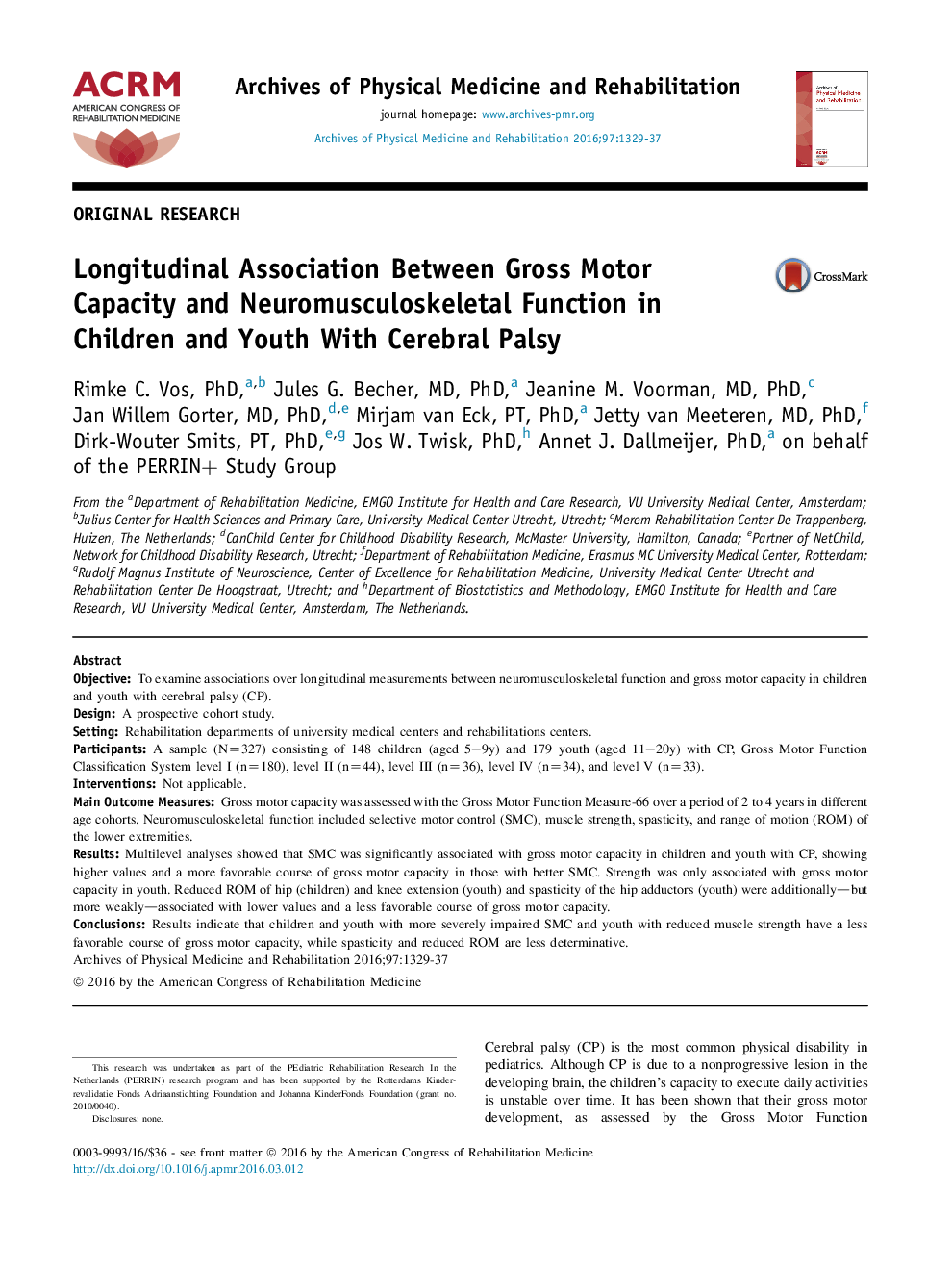| کد مقاله | کد نشریه | سال انتشار | مقاله انگلیسی | نسخه تمام متن |
|---|---|---|---|---|
| 3447869 | 1595664 | 2016 | 9 صفحه PDF | دانلود رایگان |
• Impaired selective motor control is the strongest predictor of gross motor capacity over a large age range in children and youth with cerebral palsy.
• Low muscle strength is predictive of a less favorable course of gross motor capacity in youth, but not in children.
• Spasticity and reduction in range of motion of the lower extremities are less determinative of the course of gross motor capacity.
ObjectiveTo examine associations over longitudinal measurements between neuromusculoskeletal function and gross motor capacity in children and youth with cerebral palsy (CP).DesignA prospective cohort study.SettingRehabilitation departments of university medical centers and rehabilitations centers.ParticipantsA sample (N=327) consisting of 148 children (aged 5–9y) and 179 youth (aged 11–20y) with CP, Gross Motor Function Classification System level I (n=180), level II (n=44), level III (n=36), level IV (n=34), and level V (n=33).InterventionsNot applicable.Main Outcome MeasuresGross motor capacity was assessed with the Gross Motor Function Measure-66 over a period of 2 to 4 years in different age cohorts. Neuromusculoskeletal function included selective motor control (SMC), muscle strength, spasticity, and range of motion (ROM) of the lower extremities.ResultsMultilevel analyses showed that SMC was significantly associated with gross motor capacity in children and youth with CP, showing higher values and a more favorable course of gross motor capacity in those with better SMC. Strength was only associated with gross motor capacity in youth. Reduced ROM of hip (children) and knee extension (youth) and spasticity of the hip adductors (youth) were additionally—but more weakly—associated with lower values and a less favorable course of gross motor capacity.ConclusionsResults indicate that children and youth with more severely impaired SMC and youth with reduced muscle strength have a less favorable course of gross motor capacity, while spasticity and reduced ROM are less determinative.
Journal: Archives of Physical Medicine and Rehabilitation - Volume 97, Issue 8, August 2016, Pages 1329–1337
